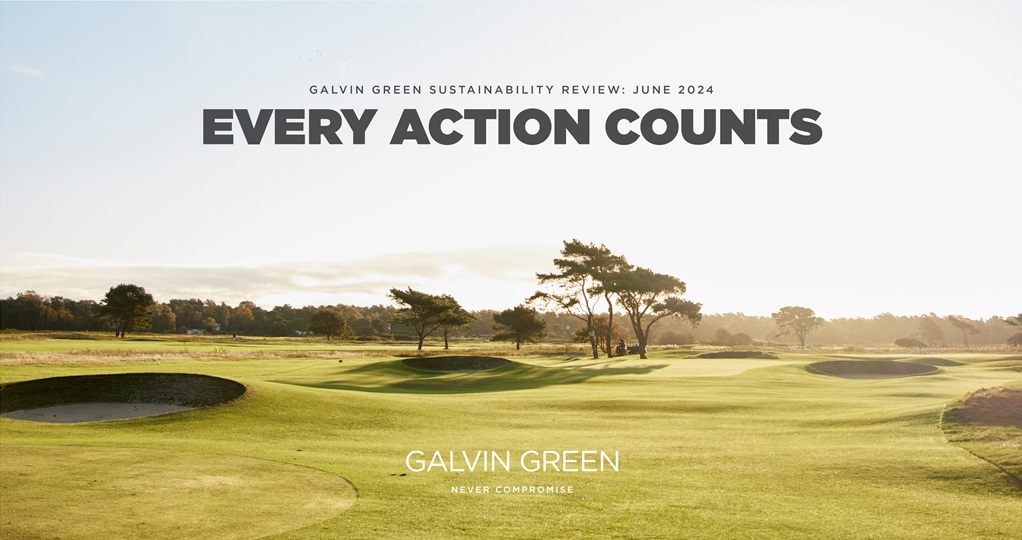Natural fibers are recognized as being more environmentally preferable. Like other industries, the golf apparel sector grapples with the issue of “greenwashing,” presenting a challenge for consumers in identifying authentically sustainable alternatives amid ostensibly eco-friendly claims by companies.
In the meantime, as consumers, we can:
- prolong the usage of golf apparel;
- donate or resell our apparel via secondhand channels. This is regarded as the most environmentally sustainable approach.
I frequently observe golf apparel brands opting for recycled polyester, exemplified by Reflo, as a sustainable choice.
This polyester variant facilitates a 50% reduction in energy consumption and results in 70% fewer carbon emissions than virgin polyester.

There are good, sustainable alternatives to materials that are just as functional but much more environmentally friendly—for instance, natural fibers (e.g., cotton, merino wool, leather).
I appreciate the thorough repair services offered by outdoor brands like Jack Wolfskin and Goretex. You can send your garments in for repair, bring them in yourself, or order a first aid kit for outdoor clothing and fix them yourself.
Let’s explore together the strides Galvin Green is taking and intends to make for sustainable golf apparel production.
Galvin Green’s sustainability approach
Galvin Green recently published its Sustainability Review, which encompasses the company’s advancements in environmental stewardship and incorporates insights from
- retail partners,
- suppliers,
- Tour players, and
- customers regarding the significance of environmental considerations.
One of the review’s findings is that 83% of garments in the latest Galvin Green collections are produced using sample-tested, bluesign® or Oeko-Tex® Standard 100-approved fabrics.

The 43-page review, entitled Every Action Counts, details how Galvin Green operates responsibly in every part of its business and how it measures sustainability in 6 different categories:
- company,
- sourcing,
- products,
- technology,
- relationships, and
- the future.
The product team conducts an extensive annual review of suppliers, measuring KPIs to guarantee high product quality and longevity standards.
Each supplier has a protocol and is ranked from 1 to 5 based on critical factors, including
- delivery security,
- overstock issues,
- purchasing and product development,
- plus a host of essential sustainability KPIs.
Interesting findings
- Galvin Green claims to excel in durability and encourages customers to invest in their long-lasting products.
- Everyone at the company shares a common passion for golf and is encouraged to pursue an active lifestyle that helps to strengthen both body and soul, as well as the company values. Galvin Green offers the head office staff electric bike leases and electric car charging.
- Galvin Green uses historical data and forecasting techniques to ensure the precision of our garment production orders. Thus, they have minimal surplus fabrics and components at the end of the production.
- The opening of a US-based distribution center – strategically placed near the port of Miami and in the same facility as their embroidery operation – has significantly reduced their transport footprint.
- Galvin Green logistics teams use intelligent, tape-free, and recyclable packaging solutions. They will introduce more nominated suppliers for packaging, tags, and other garment components, ensuring consistency across manufacturers and better control over the suppliers used.
- Fabrics with fewer components are prioritized over complex blends, making it easier for us to produce similar materials in the future.
- In 2019, Galvin Green introduced a limited UPCYCLE collection featuring garments and accessories made from fabrics left over from significant production runs – enabling us to reduce our fabric wastage significantly.
- Recycled materials are preferred over virgin polyester, and the company manufactures as close as possible to the fabric supplier.
- Since 2016, Galvin Green has been actively working to reduce resource consumption for packaging and use more sustainable materials. After a thorough review of our garment packaging in 2016, they removed all cardboard insets, reducing the package volume by 30% and reducing weight and volume during transportation.
You can find inspiration in the Sustainability Review here if you appreciate Galvin Green‘s sustainability innovations.
